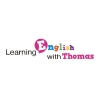昔日文章


Learning English with Thomas
2023.05.25
Somersaulting parts of speech 翻筋斗的詞類
翻筋斗的詞類
First lesson in switching parts of speech in English 初步認識英文的詞類轉換
T:Thomas|R:Richard
R: Hi Thomas! May I ask something about English parts of speech? I read somewhere that you could say, for example, “This book is a good read.” … But then someone may say, “That proves a good reading.” …What’s the difference then?
T: Ah, I see your problem. It’s using the verb (to read) as a noun in the first example, and using the same verb as a verbal noun (reading), that is a gerund, in the second example.
R: (Richard looking a bit puzzled)
T: Mind you, there’s a subtle difference here. We can turn most common verbs into nouns without changing the form, like in your first example “a good read”, right from the verb “to read”, to suggest that reading this book is a good thing, a pleasure.
R: Can you show me some more examples?
T: Certainly. We usually say things like : “ I’m glad that we have mastered this procedure”, turning the noun into a verb again, or “Can I give you a lift in my car”, turning the verb “to lift” into a noun, meaning a free ride. This is called “somersaulting parts of speech”, and people say it was “invented” by Shakespeare!
R: That’s really eye-opening.
R: 嗨Thomas!我可否問問關於英語的一些事情?我在某處閱讀到,例如,「This book is a good read」(這本書很好讀)。……但也有人可能會說,「That proves a good reading」(顯然這值得一讀)……兩者有甚麼區別呢?
T: 啊,我明白你的問題所在。第一個示例使用動詞(to read) 作為名詞,在第二個示例中使用相同的動詞作為動詞性名詞(reading),即動名詞(gerund)。
R:(Richard 看上去有點迷惘)
T: 請留意,兩者有細微的差別。我們可以在不改變形式的情況下將最常見的動詞變成名詞,就像第一個示例「a good read」,直接使用動詞「to read」,表明閱讀這本書是一件好事,一種樂趣。
R: 你能再給我看一些例子嗎?
T: 可以。我們通常會這樣說:「I'm glad that we have mastered this procedure」(很高興我們已經掌握了這個程序),再次將名詞變成動詞,或者「Can I give you a lift in my car」(我可以開車送你一程嗎?),將動詞「to lift」變成名詞,意思是順道送你一程。在英文文法,這稱為「somersaulting」,據說由是莎士比亞發明的!
R: 這真是令人大開眼界。






